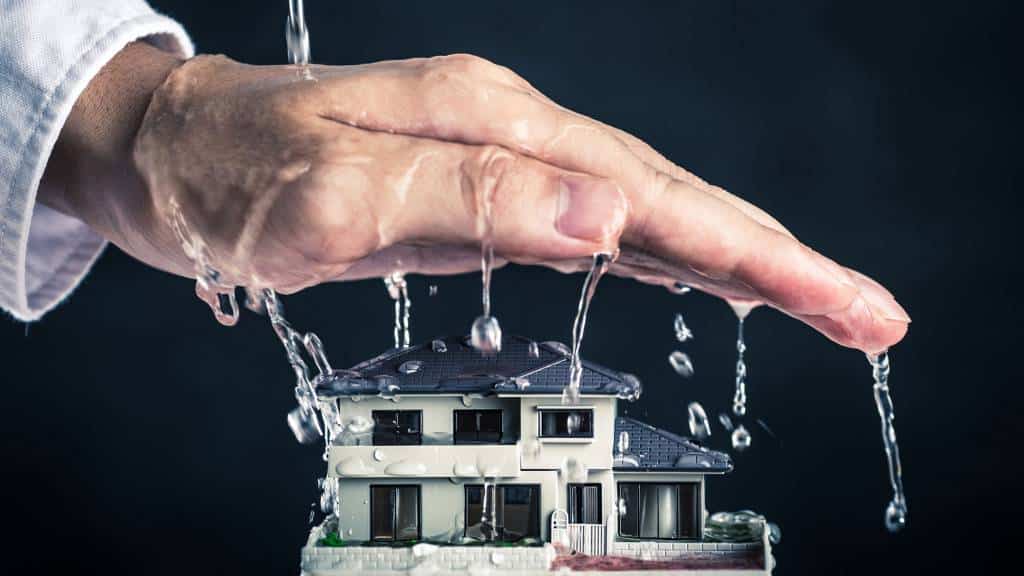The Residential Primary Common Leak Triggers: Investigation
The Residential Primary Common Leak Triggers: Investigation
Blog Article
We've stumbled upon this post pertaining to How to Find Water Leaks listed below on the internet and decided it made sense to discuss it with you on this site.
/GettyImages-957479686-f3d2e677f2e749fc98aa207b474c5c1f.jpg)
Leakages not only create waste of water however can additionally trigger unneeded damage to your house and also advertise unwanted natural growth. Sadly, water leaks may go unnoticed because most of the pipework in our home is concealed. By looking as well as understanding for everyday circumstances that create leakages, you can protect your house from future leakages as well as unnecessary damages. Today, we will look at 6 leak creates that might be triggering your pipes to drip.
Instant temperature adjustments.
Severe temperature level changes in our pipes can cause them to expand and get all of a sudden. This growth as well as contraction might trigger fractures in the pipes, particularly if the temperature are listed below freezing.
Corroded water systems
As time passes by, your plumbing system ages and also corrosion such as rust may begin eating away the pipelines. This may be the source of discoloration or bending on your pipes. This requires an inspection with your plumber right away. If our plumbing system is old, think about changing the pipelines considering that they go to a greater threat of corrosion than the more recent versions.
Faulty Pipeline Joints
The point at which your pipelines attach is regularly the weakest link in the waterline. Pipeline joints can degrade with time, causing water leakages. The majority of pipeline joints are not easily noticeable. If you have loud pipes that make ticking or banging noises, particularly when the warm water is turned on, your pipeline joints are possibly under a lot of stress. It is a good idea to have your plumber evaluate your system yearly.
Encroaching origins
The majority of water leakages begin outside the home instead than inside it. You could discover damp spots or sinkholes in your backyard, and that might imply that tree origins are invading water lines causing water to seep out.
Poor Water Connectors
Sometimes, a leakage can be brought on by loosened tubes as well as pipelines that provide your devices. More often than not, changing is what triggers the loose water Links. You could locate in the case of a cleaning equipment, a hose may spring a leak due to trembling throughout the spin cycle. In case of a water connections leak, you might discover water running straight from the supply line or pools around your home appliances.
Blocked Drains
Clogged drains pipes might be aggravating and inconveniencing, yet they can occasionally wind up triggering an overflow causing rupture pipelines. Keep removing any materials that might drop your drains pipes that can block them to prevent such troubles.
All the above are reasons for leakages but not all water leaks result from plumbing leakages; some leaks could come from roof leakages. All leakages must be fixed instantly to prevent water damage.
Leakages not just create waste of water but can additionally cause unneeded damage to your residence as well as promote unwanted natural growth. By looking and understanding for day-to-day circumstances that cause leaks, you can safeguard your house from future leaks as well as unnecessary damages. Today, we will look at 6 leakage triggers that might be triggering your pipes to drip.
At times, a leakage can be caused by loosened hoses and pipelines that supply your devices. In situation of a water links leakage, you may observe water running straight from the supply line or pools around your appliances.
How To Check For Water Leak In Your Home
How To Check for Leaks
The average household's leaks can account for nearly 10,000 gallons of water wasted every year and ten percent of homes have leaks that waste 90 gallons or more per day. Common types of leaks found in the home are worn toilet flappers, dripping faucets, and other leaking valves. These types of leaks are often easy to fix, requiring only a few tools and hardware that can pay for themselves in water savings. Fixing easily corrected household water leaks can save homeowners about 10 percent on their water bills.
To check for leaks in your home, you first need to determine whether you're wasting water and then identify the source of the leak. Here are some tips for finding leaks:
Take a look at your water usage during a colder month, such as January or February. If a family of four exceeds 12,000 gallons per month, there are serious leaks.
Check your water meter before and after a two-hour period when no water is being used. If the meter changes at all, you probably have a leak.
Identify toilet leaks by placing a drop of food coloring in the toilet tank. If any color shows up in the bowl after 10 minutes, you have a leak. (Be sure to flush immediately after the experiment to avoid staining the tank.)
Examine faucet gaskets and pipe fittings for any water on the outside of the pipe to check for surface leaks.
Undetected water leaks can happen without the home or business owner even realizing. If you suspect a water leak, but not able to find the source. It is time to contact a professional water leak detection service, The Leak Doctor.
How To Find a Water Leak In Your Home
https://www.leakdoctor.com/blog/How-To-Check-For-Water-Leak-In-Your-Home_AE197.html

As a passionate reader about Common Water Leaks In House, I thought sharing that piece of content was really useful. Those who enjoyed our blog posting plz don't forget to share it. I praise you for your time. Come back soon.
This Website Report this page